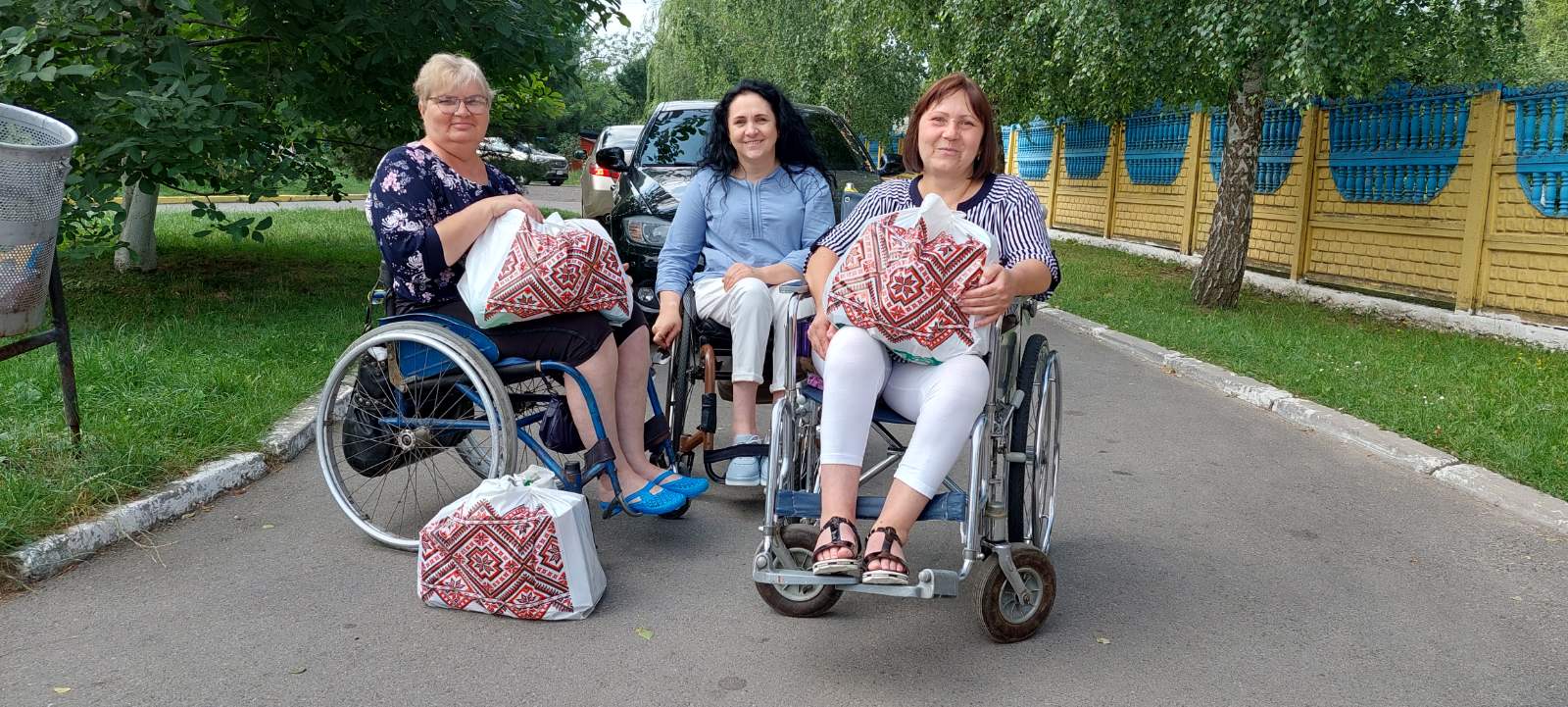Expert’s Take: Organizations representing women with disability in Ukraine are best placed to respond to their humanitarian needs
By Viktoria Nazarenko, Secretary General of the National Assembly of People with Disabilities of Ukraine (NAPD)
Date:

Viktoria Nazarenko is the Secretary General of the National Assembly of People with Disabilities of Ukraine (NAPD), an association of more than 100 organizations representing people with disabilities from different regions of Ukraine. NAPD works with various UN agencies, including UN Women, to include people with disabilities in humanitarian assistance and advocate for their rights.
Russia’s full-scale invasion of Ukraine has taken a terrible humanitarian toll on civilians, particularly on already vulnerable groups such people with disability. It is estimated that around 2.7 million people with disabilities in Ukraine face a disproportionate risk of violence or death and lack access to medical support. Women and girls with disabilities experience additional gender-specific challenges, including gender-based violence, abuse, and marginalization.
Since the beginning of the crisis, many humanitarian organizations have set out to alleviate the hardships of women with disabilities. While important, these efforts are rarely guided by sufficient understanding of the intersection between gender and disability. This can result in poor understanding of the needs of women with disabilities, perpetuate stereotypes, create barriers to humanitarian assistance, and may even inadvertently aggravate marginalization.
This is due to the lack of meaningful involvement of local and national organizations representing women with disabilities in the decision-making processes of the humanitarian response. Disability is best understood by those who are affected by it. Organizations created by or representing women with disabilities are best placed to understand their needs and concerns. For example, women and girls with epilepsy know first-hand the needs of women with similar conditions and can thus provide them with effective support. Another example is the right of women with disabilities to access to quality gynecological services tailored for their needs. Without the involvement of local organizations representing women with disability, international humanitarians would not pay sufficient attention to the technical requirements of medical equipment that women with disabilities need such as special chairs and couches. Today, this service remains largely inaccessible to many women with disability in Ukraine.
Organizations representing women with disabilities continue to suffer from lack of funding and involvement in the humanitarian response. Donor priorities are usually set without proper consultations with such organizations. This results in large international humanitarian organizations receiving the bulk of the funding, while organizations representing women with disabilities working as contractors implementing priorities they were not involved in setting.
To effectively respond to the gendered needs of women with disabilities in Ukraine, their representations need to participate effectively in the design and implementation of humanitarian action. To this end, we have partnered with UN Women to enhance the leadership and participation of local groups representing women with disabilities in decision-making processes to advance inclusive and gender-responsive humanitarian response that leaves no one behind.